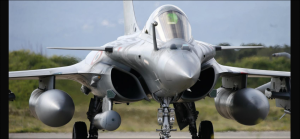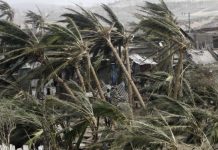Prof Ujjwal K Chowdhury
Much is written and spoken about the Rafale aircrafts deal and will be done so ahead in this election season. I am no defense expert and neither do I have any expertise on the pricing of arms and air crafts, though absence of these two is not preventing many others from commenting on these issues.

However, I have some rudimentary understanding of the public mind, or, in other words, mass or electorate psycho-graphics. And my attempt here is to look at how Rafale deal and the issues surrounding it will impact upon public perceptions at large during this election season.
The Indian Air Force has been seeking a new twin-engine fighter jet for some time, to replace the ageing Russian fighters that are being phased out. After testing out a number of global options, the Air Force in 2012 put the Rafale, built by France’s Dassault, and the Euro fighter Typhoon on its final list. The Congress-led United Progressive Alliance government had put out a tender for 126 fighter jets and, because of a lower bid offer, had planned to buy 18 Rafales in fly-away condition from Dassault, with the remaining to be built in India along with the state-owned Hindustan Aeronautics Limited.

In 2015, however, on a visit to France, Modi announced a completely new deal, in which India would be getting 36 Rafale jets from France, all in fly-away condition. Under the terms of this Rs 59,000 crore deal, all the planes would be built in France, but Dassault would have to offset about 50% of that cost in India.
First is the number of aircrafts.
UPA deal (not signed ever) was for 126 aircrafts and that of the NDA is for 36 aircrafts. Modi government has been vociferous on the issue of air security of India and the need of these high end aircrafts. If so, why is the number radically diminished and how does it ensure air security for a vast nation like India, the seventh largest by area and second largest by population in the world? This is one common question in public mind.

Second is the pricing.
The UPA claim is that its negotiated price was Rs.526 crores per aircraft. Though there are mentions of this in some official documents, a deal was never signed on this however. On the other hand, the final Rafael deal by Modi government puts it to Rs.1690 crores per air-craft, more than 300% of the UPA pricing of 2012. Now while Congress is claiming it to be a daylight robbery, BJP is telling that Congress negotiated for an engine less basic aircraft chesis, and with advanced radar and many more features the price is thrice today. Public perception is tough to be convinced for three times hike in 6 years gap, especially when both the aircrafts are MMRCA ones or multi mode Rafale combat aircrafts, and 18 of the 126 in UPA deal were to in flyaway conditions. Such an aircraft cannot be engineless when negotiated to buy.

Third is the choice of the Indian Partner.
UPA had chosen Hindustan Aeronautics Limited (HAL, a public sector undertaking) to be the offsite partner of Dassault, the French manufacturer of Rafale, to fulfil its new offset obligations. Out of the 126 Rafale jets, 18 were to be in flyaway conditions and 108 needing HAL involvement in co-manufacturing with Dassault. In the new deal, Dassault has chosen Reliance Defence of Anil Ambani to be the offsite partner for 36 jets, and Dassault was mandated to make compensatory investments in India worth 50% of the total cost of the deal which is Rs.59,000 crores. Former President of France, Francois Hollande, who signed the inter-governmental agreement on Rafale in Sept 2016, also told to AFP and published in Le Monde that the government of India had given no choice other than Reliance Defence to be partner.

Neither Reliance Defence nor any of its allied companies have any experience of manufacturing aerospace and defence equipment. Anil Ambani’s Reliance Group incorporated a defence company just days before Modi announced the new Rafale deal, a coincidence that has caused some eyebrows to be raised. Ambani also accompanied Modi to France on the same visit that led to the announcement of the deal. Crony capitalism hence is a natural criticism here.
At the time of the Dassault deal with Ambani, Reliance Defence, which had only been around for one year, already had a debt of Rs 8,000 crore and losses of Rs 1,300 crore.

However, both the present President of France and the Dassault CEO have noted that there were no pressures on them. This can be used as a counter but a weak one when the-then President’s interview is up there in Le Monde, the leading French daily.
Fourth is whether PMO was monitoring or interfering in the deal.
Putting forth a note of November 20, 2015 of the then Defence Secretary G Mohan Kumar, The Hindu paper and veteran editor N Ram claimed that PMO was running a parallel negotiations with the French side even when Ministry of Defence (MoD) was in advanced stage of negotiations. On the other hand, the government submitted to the Supreme Court in October 2018 that only Deputy Chief of Air Staff was leading the 7-member MoD team in the negotiations. After this expose, while Congress claims it was an interference by the PMO to hike up the price and get Reliance in, BJP claims it is a routine monitoring by the executive, the PMO. Since the prices have actually tripled, the monitoring will sound very expensive in public mind.

CAG Audit Report before PAC:
Deliberating on four petitions on the same issue, the Supreme Court in December, 2018, gave a verdict that all were in place and no need for a new investigation on the Rafale issue, based on a sealed cover submitted by the government. But, facing a fierce Opposition attack that it misled the Supreme Court by stating that the pricing of Rafale deal has already by been examined by the Comptroller and Auditor General (CAG) and the Public Accounts Committee (PAC), the government later moved an application in the apex court seeking a correction in the order. This episode has also led to doubts as to whether the government had misled the Supreme Court.

While no aircraft is delivered yet, and no status on their actual manufacturing and advances from the Indian government are yet known, the issue is in public mind and in media space. The aspects of number of aircrafts and increased prices, the damaging interviews of the former French President, the error before Supreme Court and parallel negotiations by the PMO etc are bound to be major talking points in this election season and will shape public opinion on this issue. Allegations of corruption do stick as we saw in the case of notional money loss in the oft-mentioned 2G-3G scam of the UPA government.
The author is a known media academic and columnist.



















